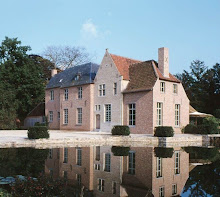















Boathouses on Muskoka Lakes
In the beautiful book “Boathouses” by John de Visser and Judy Ross, with great photographs by John de Visser (The Boston Mills Press) 45 boathouses are shown and described. They can be found on the shores of the Muskoka Lakes in Canada. These lakes are situated in the province of Ontario in the heart of Canada. As the map shows, the region counts thousands of larger and smaller lakes and rivers. Between 1905 and 1930 the area was chosen by many affluent people, many American, to build cottages as summer homes. In these years the lakes experienced large-scale building of boathouses, during Muskoka’s steamboat era, when cottagers depended on boats to get to their summer homes.
Steamers for transportation
Few roads had been opened up into the area, so the early cottagers arrived by train, then boarded the appropriate lake steamers that would carry them and their belongings to their cottages. In 1905 the Muskoka Lakes Navigation and Hotel Company ran the largest inland-waterway steamboat line in the country, ferrying cottagers and hotel guests from one end of the lakes to the other. Fifty thousand guests could be accommodated at scores of fashionable summer resorts. Many cottage owners found the navigation company’s timetable too erratic, so they bought their own steam-driven launches. These were large enough to hold family groups with their attendant trunks, wicker baskets, packing crates and hat boxes. Some of these private steamers were enormous. The Wanda II, for example, was a 94-foot (28 meter) steamer built in 1905 for Timothy Eaton, the Toronto department store tycoon. It could hold fifty passengers. Before long, dozens of private steamers plied the lakes, each requiring a boathouse for shelter. Sheets of tin were used to cover the ceiling and smokestacks were cut into the rooftops because the boats’ wood-fired engines were stoked while the craft were still in there berths.
Frequent boathouse fires
This hazardous arrangement caused frequent boathouse fires. Many early steam yachts were destroyed this way, including the lovely Wanda II, which burnt in a boathouse fire at the Eaton’s summer estate on Lake Rosseau in 1914.
By their nature, boathouses are intrusions on the landscape. Every one built obliterates another patch of scenic shoreline. But many have architectural merit that goes beyond their function. Second storeys were often added to boathouses to accommodate staff. In those early days, families often stayed for the entire summer – mothers and children, assorted grandparents, aunts and cousins. Servants ensured the smooth running of such large enterprises. On Lake Muskoka
At the turn of the century, James Kuhn, a banker from Pittsburgh, built a huge estate on Belle Isle and then brought to the island a staff of twenty-six, a number of whom lived in the boathouse. At some cottages, the boathouse upper storey was used as a dance hall.
After the steam era
As gasoline-powered motorboats took over from steamboats and steam-powered launches, the need for large waterfront buildings lessened, and from 1930 to 1965 few boathouses were built. In some cases a floor was added to increase upper-level living and because family servants were now a thing of the past, the second storey became dormitory space for the children. The boathouses became more popular to live in then the cottages. A second construction boom took place in this cottage country between 1985 and 1990 when there emerged a renewed interest in “Old Muskoka” cottages and boathouses. Muskoka once again became a fashionable summer place. Property was selling for unprecedented prices. Many of the old boathouses were restored and many extravagant new cottages were built with immense boathouses at the water’s edge, to imitate the old style.
Architecture
In the early years, architects were rarely involved in the building of the boathouses or cottages. Many turn-of-the-century cottage designs came from pattern books, popular building guides published during the Edwardian era. The one architect known to work in Muskoka around the turn of the century was from Pittsburgh. In the early 1900s Brendan Smith was hired to build cottages and boathouses for a few of the Pittsburgh group who summered at Muskoka.







